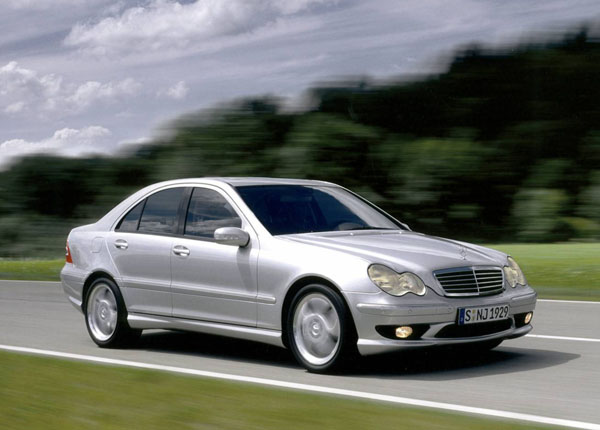By EWAN KENNEDY
CAPTION: A.
B.
C. 2011 Mercedes-Benz C-Class
BODY COPY
Mercedes-Benz has just launched an all-new C-Class model, so there’s a good chance many owners of older models will be trading up. Meaning there could be a glut of used C-Class in Australia, giving you the chance to select between the many on offer, as well as the opportunity to select from the best of them.
Mercedes C-Class costs significantly more than many cars in its class, and offers owners considerably more in the image stakes. Yet the C-Class is becoming increasingly more affordable on the prestige scene. To the extent that it’s often close to the front of the hotly contested midsize-vehicle sales race.
Though it has been built down to a price when compared with upper crust Mercedes models, the price trimming of the C-Class has been done intelligently and it certainly doesn’t look like a ‘stripper’ as the interior has decent quality materials in stylish designs.
Mercedes C-Class is sold as a three-door coupe, a four-door sedan and five-door station wagon. Coupes from 2008 to 2011 were called the CLC-Class in an attempt to give them a sportier image. That didn’t seem to work and with the new model of 2011 the C-Class coupe name was taken back to simply C-Class again.
This is a rear-wheel-drive car so those travelling in the back seats of sedans and wagons may find themselves a little cramped unless those in the front seats are willing to give up some space. This situation has improved over the years as the C-Class cars have become slightly larger, but it’s still smart to take the family along during your pre-purchase road test to make sure it suits them.
Naturally the back seats in the coupe are smaller, but that’s par for the course – and we have seen worse.
Boot space is good and the big bootlid in the sedans makes it easy to load. The wagon has a sloping tailgate that steals some cubic capacity, but we it still works for most owners.
Few cars come with such a staggering range of engines as the Mercedes C-Class. Four, six and eight-cylinder engines are offered. The latest petrol engines have direct petrol injection and are significantly better than the older units in terms of performance consumption and emissions. Look for the letters CGI in the car’s title, indicting the new-generation engines.
‘Kompressor’ in the car’s title means it has a supercharged engine to provide extra torque. Later units use a turbocharger rather than a supercharger. Indeed, in recent times turbo engines have become by far the most common.
Mercedes-Benz C-Class with turbo-diesel engines have been sold for many years, long before they became common in other European marques. They have either four or six cylinders. The newer diesels (look for CDI on the badge) are a big advance on the older diesels in smoothness and refinement and once the car is cruising at a steady speed we defy you to pick them from petrol powerplants.
The hot AMG models have tremendous engine performance and even better handling dynamics, but this comes at a cost in high fuel consumption and some may find the ride is rather firm.
The great majority of C-Class Mercedes-Benzes will have an automatic transmission. Some older four-cylinder cars have a five-speed manual gearbox, which may cause real hassles at resale time.
Spare parts, servicing and repairs are all expensive for a car of this size, but certainly not for a machine with the high prestige rating the Benz affords you. Insurance costs are generally reasonable for a car in this class.
A used Mercedes-Benz that’s been serviced throughout its life by an authorised dealer will invariable cost more on the used scene – many consider them a worthwhile investment. Be sure the service books are genuine and haven’t been rubber stamped by private mechanics.
Mercedes-Benz Australia offers a good used-car scheme on cars up to five years of age. The length of the warranty varies according to the workshop’s assessment of the car.
WHAT TO LOOK FOR
Do a visual check of the car inside and out for signs of damage or worse-than-average wear. Pay particular attention to the bumper-bar corners for signs of paint scrapes. Also have a good look at the condition of the seats.
Be sure the steering is positive with no unnecessary free play in the straight-ahead position.
There were some problems with the early version of the Brake Assist System (BAS). These should have been rectified by a dealer after a recall. Contact the dealer or Mercedes’ head office to make sure.
A noisy engine, or one that’s slow to start, may need expensive repairs or even a complete rebuild.
Call an expert to carry out a full inspection no matter how good the Mercedes appears to be after you check it out. Either use a mechanic trained on Mercedes or a senior inspector from your motoring association.
CAR BUYING TIP
Beware the seller of an upmarket car who was desperate to gain prestige, but sank all their dollars into the purchase, leaving them nothing for the service and maintenance.
